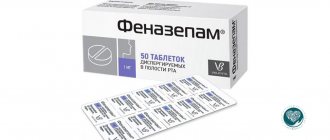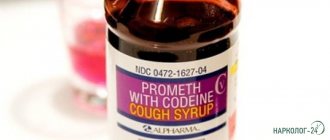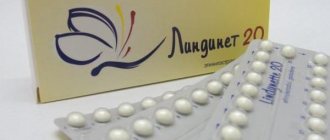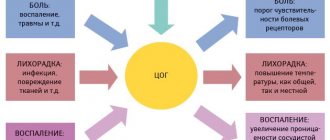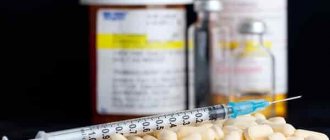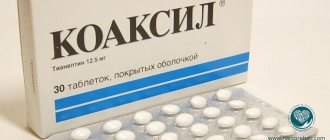Indications
Ministry of Health of Russia
G40.0 Localized (focal) (partial) idiopathic epilepsy and epileptic syndromes with seizures with focal onset
G40.1 Localized (focal) (partial) symptomatic epilepsy and epileptic syndromes with simple partial seizures
G40.2 Localized (focal) (partial) symptomatic epilepsy and epileptic syndromes with complex partial seizures
G53.0 Neuralgia after herpes zoster (B02.2+)
FDA recommendations
Partial seizures with or without secondary generalization
Neuralgia after shingles
Restless legs syndrome
UK Medicines and Healthcare Products Regulatory Agency guidelines
Epilepsy
Neuropathic pain
Literature:
- A short reference book on psychopharmacology, pharmacotherapy and mental pathology / Kozlovsky, Vladimir Leonidovich. - St. Petersburg: SpetsLit, 2015.
- The influence of Pregabalin on the cardiovascular system: dissertation of a candidate of medical sciences: 14.00.25 / Dolgova Natalya Yurevna; [Place of defense: Kursk State Medical University]. - Kursk, 2009. - 112 p.
- Modern psychotropic drugs used in psychiatry: educational and methodological manual / [Olga Fedorovna Pankova, Artem Vyacheslavovich Alekseev, Alexander Viktorovich Abramov]; Ministry of Health of the Russian Federation, Federal State Autonomous Educational Institution of Higher Education "Russian National Research Medical University named after N. I. Pirogov" (FGAU HE RNRMU named after N. I. Pirogov of the Ministry of Health of Russia), Department of Psychiatry and Medical Psychology. — Moscow: Federal State Autonomous Educational Institution of Russian National Research Medical University named after. N.I. Pirogova Ministry of Health of Russia, 2022. - 135 p.
Treatment regimen
Dosage and dose selection
- 900-1800 mg/day in three divided doses
- Neuralgia after shingles (immediate release): 300 mg on day 1; 600 mg in two divided doses on day 2; 900 mg in three doses on day 3.
- Neuralgia after herpes zoster (extended release): 600 mg in the morning on day 1; 1200 mg per day in two divided doses on day 4.
- Restless legs syndrome (sustained release): 600 mg per day in one dose, around 5 p.m.
- Convulsions (adults and children over 12): initial dose 900 mg/day in three divided doses; recommended dose 1800 mg/day in three divided doses; the time interval between doses should not exceed 12 hours.
- Convulsions (children 5-12): initial dose 10-15 mg/kg per day in three divided doses; within three days, increase to 25-35 mg/kg per day in three doses; maximum dose 50 mg/kg per day; the time interval between doses should not exceed 12 hours.
- Convulsions (children 3-4): initial dose 10-15 mg/kg per day in three divided doses; within three days, raise to 40 mg/kg per day; maximum dose 50 mg/kg per day; the time interval between doses should not exceed 12 hours.
- If gabapentin is added to another anticonvulsant, increase the dose of gabapentin slowly over a week.
- Some patients with pain or anxiety may benefit from taking immediate-release gabapentin only twice a day.
- Very high doses can be divided into more than 3 doses per day.
- Any broken half of a tablet that is not used within a few days should be thrown away.
- Gabapentin extended-release tablets should not be crushed or chewed.
- Gabapentin extended-release tablets must be taken with food.
- If very strong sedation occurs, most of the daily dose can be taken at night
How quickly does it work?
The cramps go away after 2 weeks.
The pain goes away in 2 weeks or less.
May reduce anxiety in various disorders for several weeks.
Expected Result
Disappearance of symptoms.
If it doesn't work
If the pain does not go away after 6-8 weeks, you need to increase the dose or discontinue the drug.
How to stop taking it
Reduce dose for at least a week. If taken abruptly, epileptics may experience seizures [1].
Treatment combinations
- Gabapentin is itself an augmentant that is added to other anticonvulsants in the treatment of epilepsy; to lithium, atypical antipsychotics and anticonvulsants in the treatment of bipolar disorder.
- Gabapentin is added to antidepressants in the treatment of neuropathic pain
- In the treatment of anxiety, gabapentin is a second-line drug of choice, added to antidepressants or benzodiazepines [1].
Side effects
If you strictly follow the veterinarian's recommendations, the medicine has no side effects, but in rare cases the following are possible:
- nausea and vomiting;
- diarrhea;
- drowsiness;
- ataxia – loss of coordination of movements;
- inhibition of actions.
In case of overdose, contact your veterinarian immediately. Violation of the dose can cause your pet:
- sedation;
- drowsiness;
- apathy;
- impaired coordination of movements;
- decreased appetite;
- inflammation of the eyes.
Special patient groups
Patients with kidney problems
Reduce dosage [1].
The use of gabapentin in patients with renal failure younger than 12 years of age has not been studied.
Patients with liver disease
Use in normal dosage [1].
Patients with heart disease
No special recommendations [1].
Elderly patients
Elderly patients are more likely to experience side effects (ataxia, edema) [1].
Children and teenagers
- Gabapentin is approved for use in the treatment of seizures in children over 3 years of age [1].
Pregnant
- There have been no adequate studies in pregnant women [1].
- All risks should be weighed and compared
- When treating bipolar disorder or psychosis, discontinue gabapentin during pregnancy; For patients with bipolar disorder, stop taking gabapentin until pregnancy; You can resume taking it immediately after birth.
Breast-feeding
- The medicine passes into breast milk.
- It is recommended that you stop taking gabapentin or stop breastfeeding
addictive
Due to the same effect on the nervous system, both Pregabalin and Gabapentin, when used in large doses, can cause rapid, persistent dependence.
Reference! According to statistical data in Russia, the main population abusing these medications are people aged 20-35 years.
When taking Pregabalin or Gabapentin for pharmacological purposes, dependence on them is extremely rare. But over time, the body begins to break down and remove them faster, which provokes a person to increase the dosage . This helps to restore the previous effect of these drugs, but leads to addiction . To prevent this, you need to contact your doctor to adjust your therapy.
Side effects and other risks
Mechanism of side effects
Side effects are caused by blockade of voltage-gated calcium channels.
Side effects
- Sedation, dizziness
- Ataxia, fatigue, nystagmus, tremor
- Edema
- Blurred vision
- Nausea, diarrhea, constipation, dry mouth, dyspepsia
- In children under 12: emotional instability, increased mobility, impaired thinking
- Dangerous side effects: anaphylaxis and angioedema, suicidal ideation
- Weight gain: yes
- Sedation: yes, often; especially strong at high doses
What to do about side effects
- Wait;
- For sedation, take at night;
- Reduce dose;
- Switch to another drug [1].
Long term use
Safely
addictive
No.
Overdose
Confusion of speech, sedation, diarrhea, blurred vision
Content:
- Description and scope
- Gabapentin and Pregabalin: differences in side effects
- Gabapentin and Pregabalin: comparison and differences in overdose
- addictive
- Comparison of contraindications
The group of antiepileptic (anticonvulsant, psychotropic) drugs includes a wide range of drugs, including Gabapentin and Pregabalin. Despite the general focus, they have slightly different effects, a range of side effects and contraindications. Comparing all the qualities of both drugs will help you find out how effective and safe each of them is.
Expert advice
Well studied as a remedy for cramps and neuralgia after shingles, but most often used off-label;
Off-label use is justified as a first-line remedy for neuropathic pain, a second-line remedy for anxiety;
There is not enough evidence for off-label use in bipolar disorder; lamotrigine has a stronger evidence base;
There is insufficient evidence for off-label use in schizophrenia [1].
Gabapentin and Pregabalin: comparison and differences in overdose
Both drugs can cause poisoning if the recommended dosage is accidentally or unintentionally exceeded or when treated concomitantly with other anticonvulsants.
Signs of Gabapentin intoxication include:
- slurred speech;
- fatigue;
- dizziness;
- moderate sedative effect.
Symptoms of Pregabalin poisoning are:
- depression;
- hallucinations (most often frightening);
- confusion;
- causeless mood swings;
- loss of hunger;
- loss of taste;
- memory losses;
- convulsions and/or tremors;
- lack of coordination;
- absentmindedness;
- dizziness;
- headache;
- disruption of the gastrointestinal tract and many others.
A comparison of the signs of poisoning with these drugs showed that the symptoms are much more severe with Pregabalin. However, there is currently no data on deaths due to overdose of both drugs.
Combination with other substances
Often, polydrug addicts, in order to reduce the symptoms of “withdrawal” or, on the contrary, enhance the narcotic effects of drugs, take different drugs at the same time. For example, it could be Amphetamine, Baclofen, Habana (aka Lyrica), ethyl alcohol and others. All combinations, without exception, increase the side effects of drugs, and some options end in coma or death.
Gabapentin and Lyrica
Gabapentin and Lyrica (Pregabalin, or Gabana) have almost similar properties in terms of both GABA and effects on the body. Both drugs are used in pharmacological practice for epilepsy.
However, there are also differences between them. For example, Gabapentin is absorbed only in the small intestine, partially, entering the bloodstream slowly and unevenly. Lyrica is absorbed completely, quickly, and penetrates the mucous membrane not only of the small intestine, but also beyond. The combined use of drugs leads to the receipt of the drug effect at different times, and also provokes an increase in the adverse reactions of both drugs.
Gabapentin and coffee
Scientific studies have not found an interaction between gabapentin and caffeine. The combined use of both substances has not been studied.
Gabapentin and alcohol
However, the body's reaction to the combination of gabapentin with ethyl alcohol has been studied quite well. These two substances are absolutely incompatible with each other. Their simultaneous use threatens with the following consequences:
- confusion;
- pain throughout the body;
- irritability, hostility;
- dryness of the oral mucosa;
- loss of coordination of movements;
- bruising (increased fragility of blood vessels);
- swelling of the face, limbs;
- convulsive muscle contraction.
Alcohol greatly increases the side effects of gabapentin, which can lead to coma and death.
Gabapentin and phenibut
Phenibut is a nootropic pharmacological agent, a stimulator of metabolism in the central nervous system. This is an antidepressant not prohibited in sports, which is used to treat anxiety, sleep disorders, restlessness, and irritability. According to reviews, it enhances the effect of gabapentin. At the same time, the likelihood of developing adverse reactions of both drugs increases.
Gabapentin addiction
The rapid development of dependence on gabapentin is explained by the rapid emergence of body resistance to a certain dosage of the drug. The desired effect is not achieved, and the withdrawal syndrome makes itself felt fully, which forces the drug addict to increase the dosage.
Overdose
As with any drug, using too much gabapentin can lead to an overdose. The reaction depends on the dose, and it will be individual for everyone: the gastrointestinal tract will react more strongly in some, the heart and blood vessels in others, and others may fall into a coma. In general terms, the symptoms of an overdose are as follows:
- depressed state, drowsiness;
- speech problems;
- double vision;
- breathing problems;
- vomiting and/or diarrhea.
If the dose is very large, death is possible, especially in combination with alcoholic beverages.
Gabapentin poisoning: first aid
In case of overdose, first of all, it is necessary to keep vital functions under control. You should definitely call an ambulance. Primary measures include gastric lavage and taking sorbent medications. There are no antidotes for gabapentin. Treatment is mainly symptomatic, but if necessary, hemodialysis can be performed in a hospital setting. In some cases, resuscitation measures may be required.
Withdrawal
Drug withdrawal, or withdrawal syndrome, can occur even in people who take gabapentin for therapeutic purposes, not to mention pharmaceutical drug addicts. Withdrawal syndrome is characterized by such phenomena as: changes in blood pressure and body temperature, severe pain in joints, muscles, and head. A depressive state reaches its peak, irritability and aggressiveness arise, sleep is disturbed, and appetite disappears.
This condition may last up to 10 days after stopping the drug. Moreover, in a more or less mild version, these manifestations will persist for another 1-1.5 months.
REMOVAL AT HOME

